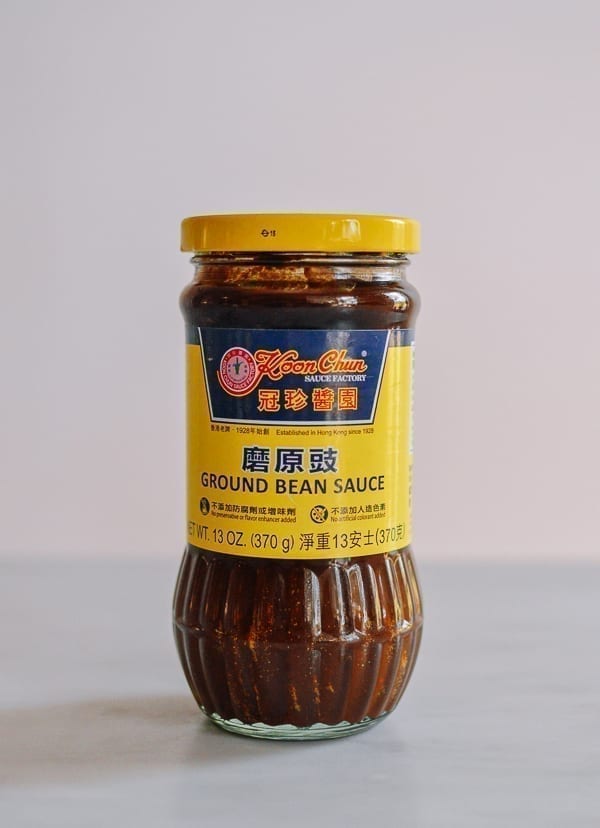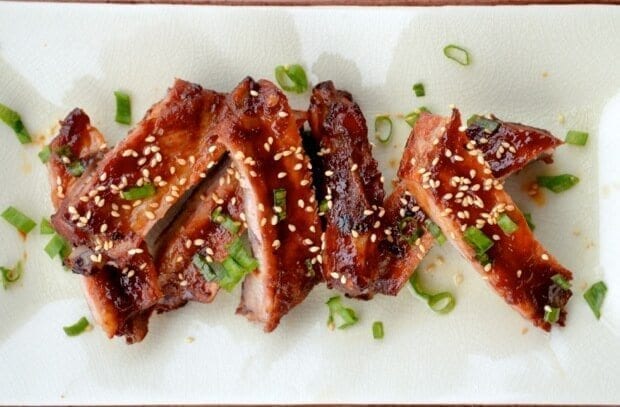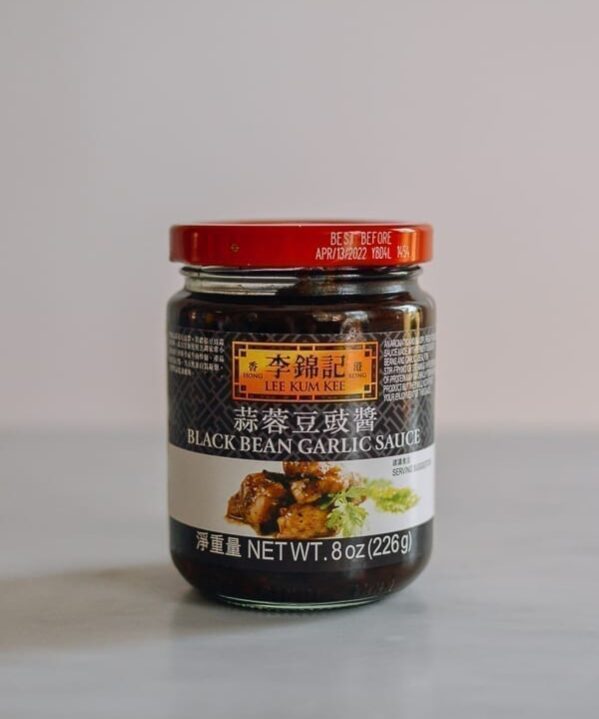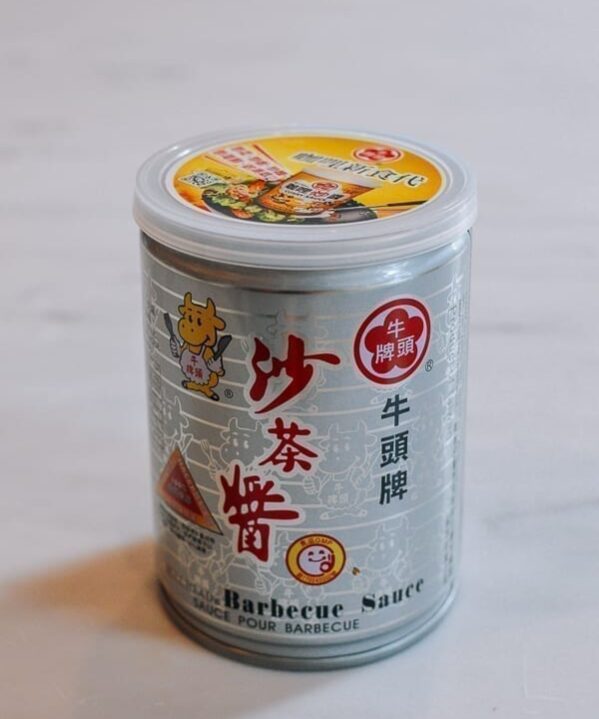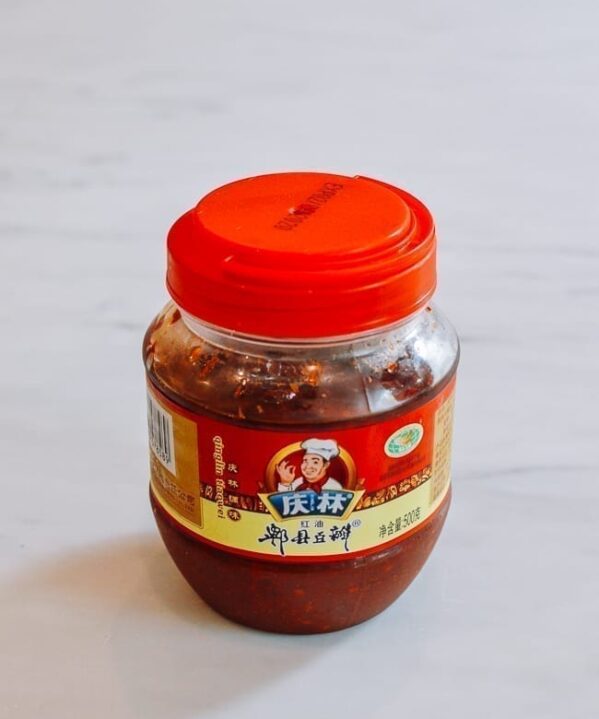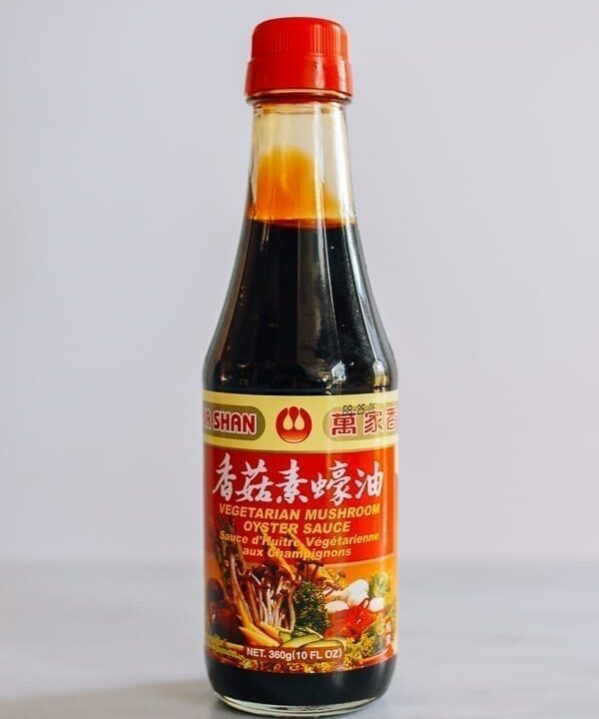There are many savory Chinese sauces and pastes made from fermented soybeans. Instantly adding flavor to stir-fries, stews and other dishes, you can find them stacked side-by-side in any Chinese grocery store. Just look for the aisle with a dizzying array of soy sauces, vinegars, rice wines, hot sauces, and bean pastes.
In this article, we’ll talk about ground bean sauce, a key ingredient in meat marinades, some stir-fries, and Cantonese stews.
But what is the difference between ground bean sauce and just…”bean sauce?” Why do the jars look so similar?? What about sweet bean sauce and bean paste? Aren’t Chee Hou Sauce and Hoisin Sauce also made with fermented soybeans? We’ll clear up the confusion below!
Got a question about another ingredient?
Check out our full glossary of Chinese sauces, wines, vinegars, and oils, which includes photos and descriptions of each.
What Is Ground Bean Sauce?
Ground bean sauce is made with fermented yellow soybeans. Not to be confused with regular bean paste AKA sweet soybean paste (豆瓣酱), which is made with little more than soybeans, wheat, and salt, it usually has additional seasonings, including sesame oil, sugar, and spices.
In terms of flavor, it is mild and salty, with the umami-laden punch of fermented soybeans.
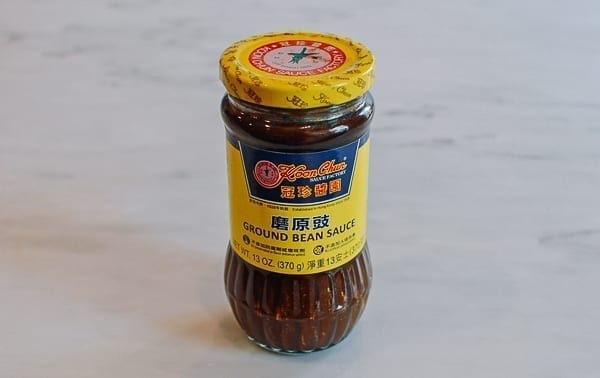
Here’s a look at the ingredients labeling:
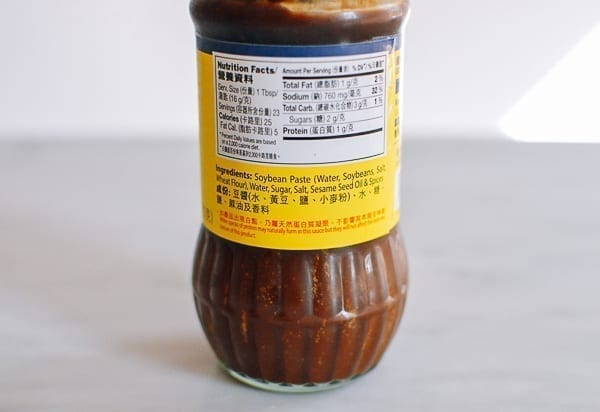
You may also confuse it with sweet bean sauce, AKA “sweet flour sauce.” This ingredient is darker in color and generally not made with majority soybeans at all, but from fermented wheat flour. The result is a condiment with a sweetness level that’s on par with hoisin sauce, and can be used in dishes like Peking Duck and Beijing Fried Sauce Noodles.
Also, don’t confuse it with Hoisin Sauce or Chee Hou Sauce, which ARE made with soybeans and can look similar!
Each has a slightly different flavor profile. Hoisin sauce is a lot sweeter than ground bean sauce, with about 10g of sugar per tablespoon (ground bean sauce contains about 2g per tbsp). It also contains sesame paste, garlic, and a little bit of chili.
Chee Hou Sauce can include other more complex ingredients, like salted plums, salted lemons, and fermented bean curd.
That said, these various pastes and sauces do have shared qualities, with differences that can be hard to describe without tasting them side by side.
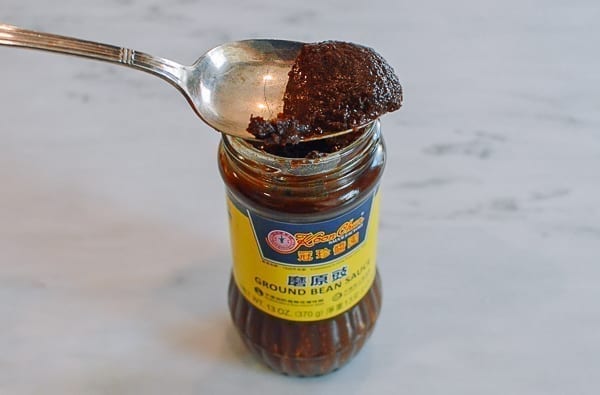
How To Use It
The Koon Chun brand of ground bean sauce has been around for some time and in Cantonese, our family called it “meen see jeung.” We used it in Chinese BBQ spare rib sauces like our recipe for Takeout Style Chinese Spare Ribs.
Or our juicy Chinese Boneless Spare Ribs:
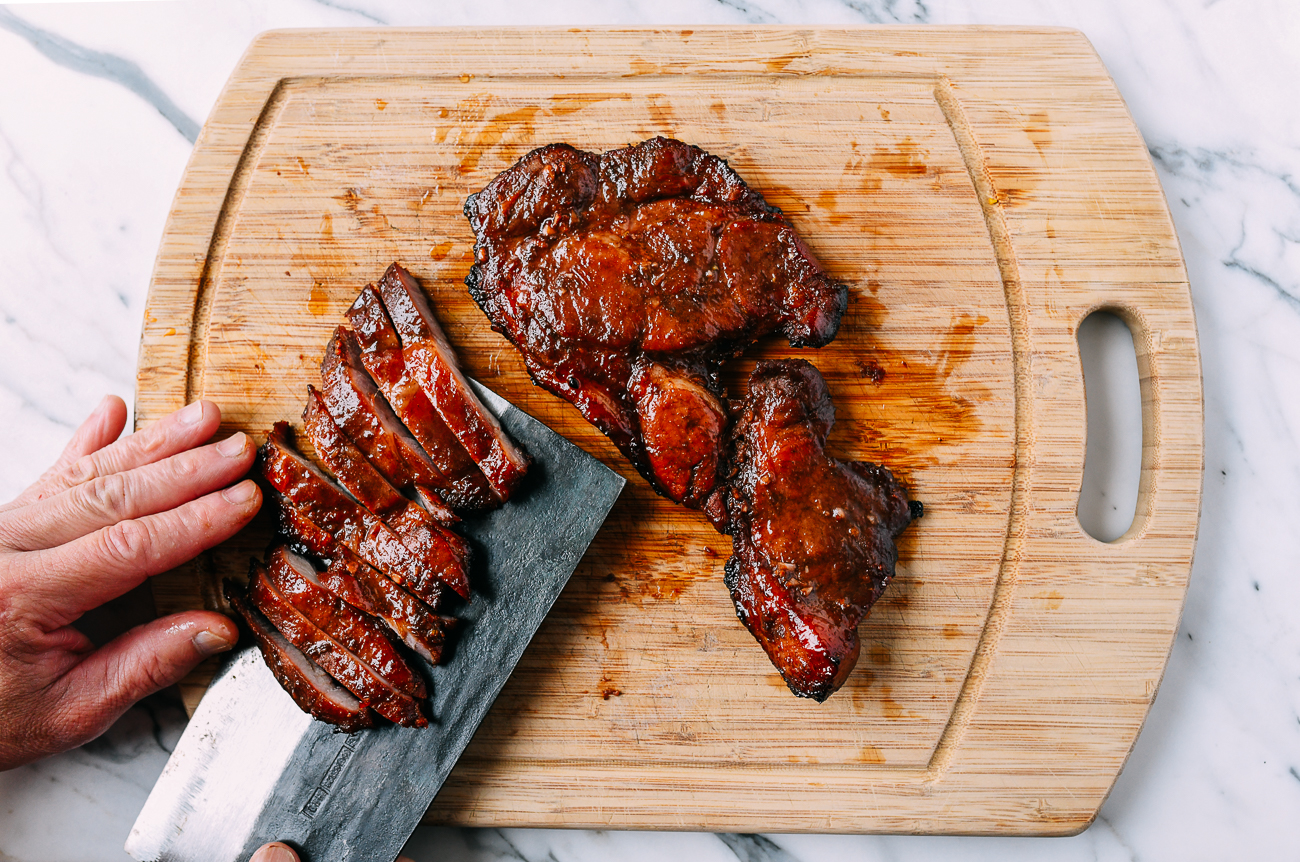
We also use it in stewed dishes, like our pork rib stew with taro:
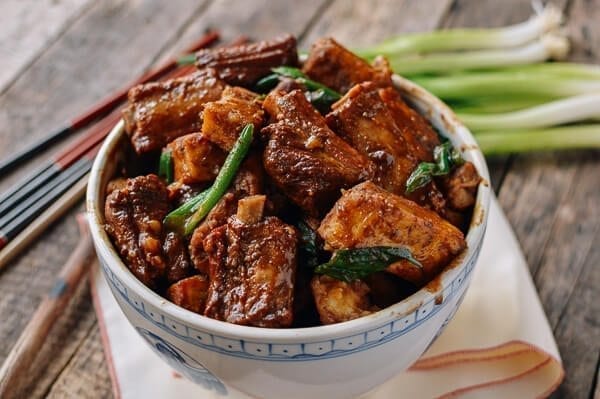
Buying & Storing
The most recognizable brand that we gravitate towards is Koon Chun, which we’ve been using for years. It’s very clearly labeled in English, which makes finding it easy! Find it at Chinese grocery stores or online.
Lee Kum Kee is the other brand we usually see at our Chinese grocery.
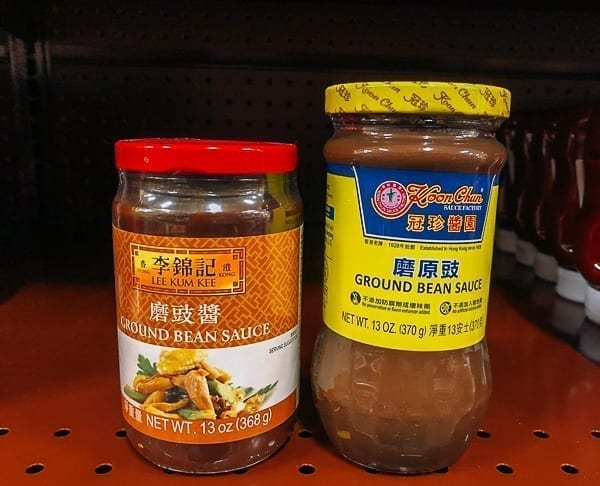
Note that you may also find Koon Chun’s “Bean Sauce.” The jars look remarkably similar, as are the names:
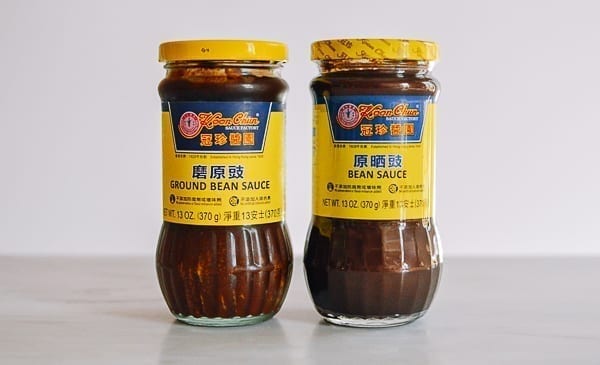
Both sauces contain soybean paste, water, sugar, salt, and sesame oil. The only difference we can see is that ground bean sauce has additional spices, while bean sauce does not (see the ingredients list comparison below. Ground bean sauce is on the left and bean sauce is on the right).
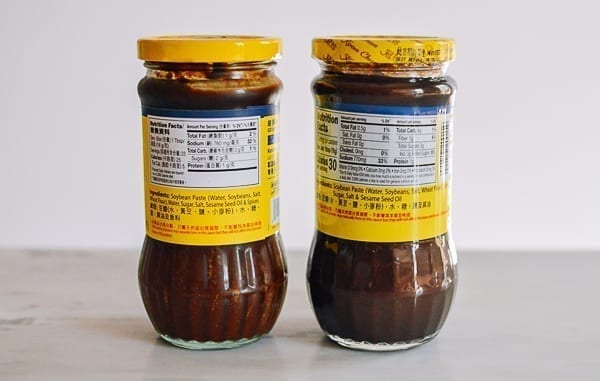
Our verdict? You can use them interchangeably, but if you have to choose between the two at the grocery store, pick up the ground bean sauce. You want those extra spices!
Store in the refrigerator, and always use a clean utensil when spooning some out for a recipe. It will keep for up to a year this way.
Substitutions
If you can’t find ground bean sauce, you can substitute a similar fermented soybean sauce like hoisin sauce, chee hou sauce, or regular bean paste.
We know, we just talked about how it’s important to not confuse all of these sauces. But if you need a substitution, they’re reasonable stand-ins for each other!
However, keep in mind that you may need to reduce the sugar in your recipe elsewhere, as hoisin sauce is a lot sweeter than ground bean sauce.
Our Favorite Recipes That Use This Ingredient
- Beijing Fried Sauce Noodles (Zha Jiang Mian)
- Braised Pork Rib & Taro Stew
- Takeout Style Chinese Spare Ribs
- Crispy Duck Wrap
- Boneless Spare Ribs
If you have further questions about this ingredient, let us know in the comments––we try to answer every single one.
